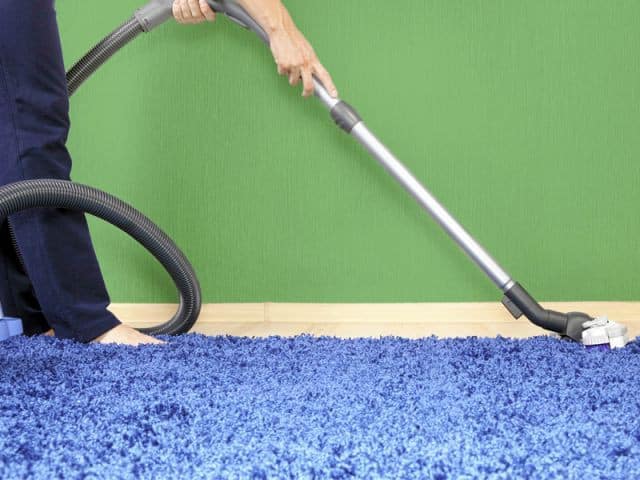
Ultimate Guide to DIY Carpet Repair: Fix Common Issues Quickly
Carpet issues can range from unsightly stains to unpleasant wear and tear that not only affects the aesthetic of your space, but can also reduce the overall lifespan of your flooring.
Fortunately, you don’t need to be a professional or spend a fortune to fix these problems. This ultimate guide to DIY carpet repair is designed to help you breathe new life into your carpets, restoring their appearance and functionality quickly and efficiently.
Whether it’s a torn section, stubborn stain, or even a burn mark, our guide covers a variety of methods and tips to tackle common carpet repair Melbourne issues effectively using simple tools and materials available at home or from local hardware stores.
Some Common Carpet Issues
Carpet issues vary widely, ranging from simple stains and minor wear to more severe tears, burns, and extensive soiling that penetrates deep into the fibres. Common problems include localised staining from food or drink spills, pet accidents, or dirt and mud tracked indoors. Physical damage can manifest as snags, frayed edges, or even holes and tears caused by furniture, pets, or accidents.
Over time, carpets also face issues like matting, especially in high-traffic areas, and the accumulation of dust and allergens that can affect indoor air quality. Understanding these issues is crucial as it influences the type of repair technique to employ, ensuring longevity and maintaining the aesthetics of the carpet.
Required Tools and Materials for DIY Carpet Repair
To tackle DIY carpet repair, you must gather the right tools and materials. The basic toolkit should include:
- Carpet knife or utility knife: For precision cutting of damaged sections and trimming of patch pieces.
- Seam roller or an old comb: Useful for blending the patch into the existing carpet, minimising visible seams.
- Double-sided carpet tape: This adhesive is crucial for securing the patch without additional tools or equipment.
- Donor carpet/remnants: Pieces of carpeting that match the existing material’s texture and colour, used for creating seamless patches.
Optional tools might include a knee kicker for re-stretching the carpet and a wet-dry vacuum for cleanup after the repair. Having these tools on hand prepares you for most common carpet repair scenarios, from quick fixes to more comprehensive patch replacements.
Step-by-Step Guide on Carpet Patching
Assessing and Marking the Damaged Carpet
Begin by thoroughly assessing the extent of the damage. Carpet patching is most effective for small areas that are frayed, worn, scorched, or stained beyond repair. Identify
whether the damaged section is small enough for a patch repair or if a larger section requires more extensive measures.
Use an awl or a capped pen to gently outline the area to be cut out, pressing between the carpet tufts to minimise harm to the fibres. This outline marks the exact size and shape of the replacement patch needed, ensuring the repair blends seamlessly with the surrounding carpet.
Preparing the Donor Carpet and Applying Carpet Tape
Start by selecting your donor carpet piece, which should ideally come from leftover remnants of the same carpet or a hidden spot in the house such as under furniture or inside closets. Ensure the chosen carpet matches the texture and style of the area needing repair. Place the damaged section you previously cut out over the donor carpet to serve as a template, trace around it precisely, and then cut the donor carpet accordingly.
The next step involves applying double-sided carpet tape. First, ensure the floor beneath the repair area is clean and dry. Arrange strips of carpet tape around the perimeter of the cut-out section on the underlay or subfloor, pressing down firmly to secure them. Peel off the backing to expose the second adhesive side just as you are ready to place the donor piece.
Adhering carefully to these steps prepares you for a successful DIY carpet patch repair, seamlessly restoring the beauty and functionality of your carpet with minimal visible signs of the repair work.

Techniques for Fixing Tears, Holes, and Burns
Assessing the Damage and Gathering Tools
To effectively repair tears, holes, and burns in your carpet, start by carefully assessing the extent of the damage. Determine if the affected area is small enough for a DIY repair or if professional help is needed, especially for larger or more prominently located damages.
You’ll need a few essential tools and materials, including a carpet knife or utility knife, a seam roller or an old comb, and donor carpeting (either new remnants or existing carpet from less noticeable areas of your home). Also, gather double-sided carpet tape and small remnant pieces to handle the donor area.
Step-by-Step Process for Patching and Blending
Begin the repair process by using an awl or capped pen to outline the damaged section, ensuring minimal disruption to surrounding fibres. Carefully cut out this section, aiming to only remove the backing while preserving the tufts. Next, use the removed piece as a template to cut a matching piece from your donor carpet, paying attention to the carpet’s nap direction for a seamless fit.
Apply double-sided carpet tape to the perimeter of the now-empty patch area on your floor, removing the protective covering on one side to adhere it firmly. Position the donor patch over the tape and press down firmly, ensuring it sticks into place without shifting. Lastly, blend the patch into the surrounding carpet using a seam roller, comb, or dry cloth, being careful around the edges to maintain the integrity of the fibres.
How to Remove Stains and Deodorise Carpets?
Identifying and Treating Different Types of Stains
Stains on carpets can vary widely, from food and drink spills to pet accidents and dirt tracks. For effective stain removal, first identify the type of stain. Organic stains like food, mud, or blood require immediate blotting with a clean cloth followed by the application of a mild detergent solution or a carpet stain remover, scrub gently in a circular motion.
Rinse the area with clean water and blot dry. Inorganic stains like ink or paint might need specialised cleaning solutions as directed by carpet care experts.
Materials Needed and the Application Process
To tackle both stains and odours, prepare with basic supplies such as warm water, a mild detergent, white vinegar for odour elimination, and a good stock of clean cloths or sponges for blotting and scrubbing. For odour removal, especially from pet accidents or food spills, sprinkle a generous amount of baking soda over the affected area, let it sit for a few hours or overnight, and then vacuum it up.
Start the cleaning process by gently blotting any wet stains to remove excess liquid. Apply your cleaning solution according to the type of stain and scrub gently. To deodorise, after cleaning, apply vinegar or baking soda to the area, allowing it to absorb odours before a final vacuuming. This dual approach not only cleans but also refreshes your carpet, extending its life and maintaining its appearance.
Tips for Maintaining Your Carpet’s Appearance
Restoring Flat or Matted Carpet Fibers
Flattened or matted carpet fibres can make your whole carpet look old and worn. To restore these fibres, start by vacuuming the carpet to remove dirt and lift some of the fibres.
For areas that remain flat, use a carpet rake or brush to gently but firmly lift the matted fibres.
Another effective method is the use of steam. Gently steaming the affected areas can help reinvigorate the fibres, making them stand upright again. Finally, avoid heavy furniture in the same spot and rotate rugs regularly to distribute wear evenly.
Preventative Care and Regular Maintenance
To extend the life and appearance of your carpet, regular and preventative maintenance is key. Regular vacuuming, at least once a week, captures dirt, pet dander, and other debris before it can damage the carpet fibres. Placing doormats at entrances reduces the amount of dirt tracked onto the carpet. Immediately treating spills prevents stains from setting.
Additionally, periodically rearrange your furniture to prevent certain areas from becoming overly worn and use blinds or curtains to minimise sun exposure, which can fade carpet colours over time.
When to Call a Professional for Carpet Repair?
There are several instances where DIY carpet repair might not suffice, and professional help is a more viable option. These include large or complex tears, significant water damage, and persistent stains that do not respond to at-home cleaning methods.
Furthermore, carpets that have structural issues, such as rippling or buckling, require professional tools and experience to remedy. In cases involving expensive or antique carpets, professional repair ensures the preservation of quality and value.
While DIY carpet repair can be cost-effective for minor issues, professional carpet repair Melbourne offers numerous advantages that ensure durability and aesthetic quality.
Professionals have access to high-grade tools and materials, making repairs nearly invisible and more durable. They also bring expertise in handling diverse carpet materials and complex damages that might worsen with amateur repair attempts.
A professional repair can extend the carpet’s life expectancy, ultimately saving money on premature replacements. Moreover, some carpet warranties require professional repairs for claims to be valid, making DIY fixes potentially costlier in the long run.
Conclusion
Over time, regular wear and tear or specific damages can mar the beauty and utility of your home’s carpets. Luckily, with a bit of knowledge, the right tools, and some determination, you can handle many common carpet issues yourself using the DIY repair methods described in this guide.
DIY carpet repair empowers homeowners to take immediate action against damages without waiting for professional help, saving both time and money.
Remember to assess each damage carefully to determine if you can fix it or if it needs professional carpet repair Melbourne, especially when dealing with complex issues like structural repairs or extensive damage.
If your carpets are heavily damaged, you can count on Clean To Shine. With years of experience, our team can handle any complex project with ease and assure you of great results. Contact us today to discuss your needs and restore your carpet’s beauty!



